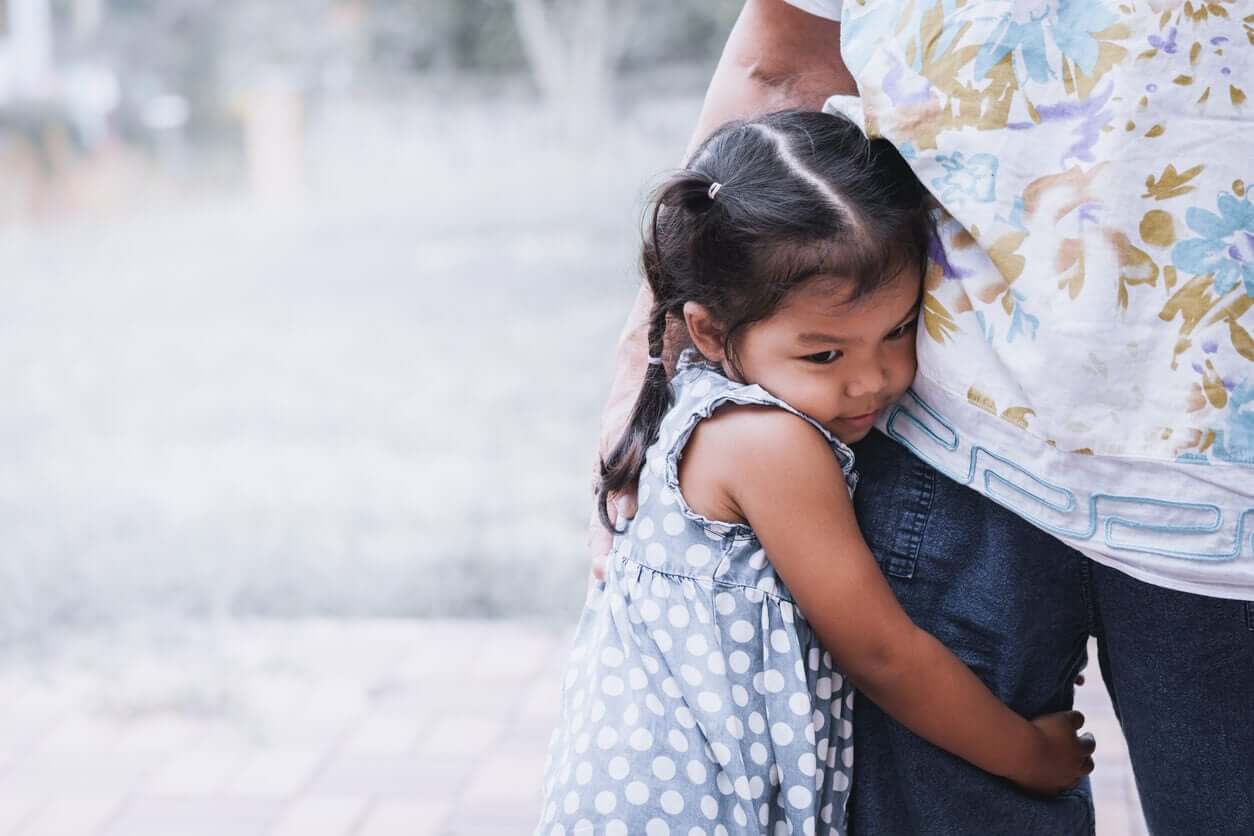10 Family Interaction Patterns That Can Be Harmful

The way in which members of a family communicate with each other is a necessary condition for maintaining harmony in the home. However, certain ways of relating constitute family interaction patterns that can be detrimental to family members.
Family psychology has studied these dysfunctional bonds and how families unconsciously adapt to them.
Although this is a fairly complex topic, we’ll try to explain how these inappropriate family interaction patterns manifest themselves. That way, you can identify them in time and can act accordingly.
Dysfunctional family interaction patterns
“Interactions are considered as the units of the family relational system; all of them make up the architecture of the family, from the transactional point of view. “
-Ana Fairlie and Dora Frisancho-
Psychologists define family relationships according to the number of members. In general, in models with three or more members, harmful family interaction patterns can occur. In the following article, we’ll describe each of them.
1. Paradoxical communication
In paradoxical behavior, the messages that are communicated are incongruous and ambiguous.

As a result, the child is trapped in a double bind where the same parent appears and communicates a protective attitude, but at the same time devalues it. For example: “You have to do it yourself, but I’ll do it because you can’t do it.”
2. Disqualification and disavowal
Overriding or minimizing the decisions of a family member involves developing a disqualifying pattern of interaction. This is a type of pathological communication, which includes the use of annoying nicknames or inappropriate qualifications in order to belittle the other person.
This type of interaction creates an atmosphere of uncertainty to which the family unconsciously adapts. And at the same time, it creates a dysfunction in the bond that’s detrimental to everyone.
3. Murmuring, silences, and laughter (not related to humor)
By talking too much, not talking, or laughing constantly for no reason, many times, you avoid facing serious problems.
Silences are also sometimes used as methods of punishment or domination, something that’s commonly known as the “freezing someone out”
These patterns of interaction create environments where difficulties are never overcome, due to the constant avoidance of decision-makers.
4. Family projecting
When children are treated like goods belonging to their parents, they lose the ability to build their own selves.
In these cases, the child’s effort is focused on being the child that their parents want and not the independent and critical person that they should be.
5. Dependency
When the demands and needs of the child are compulsively satisfied, parents make it difficult for them to build their own identity.
If they can’t even express their likes and feelings because the parents assume they already know them, the child loses the ability to recognize and express them.
6. Lack of attention and detachment
Contrary to the above, systematic neglect produces feelings such as helplessness and defenselessness.
7. Alliances and coalitions
When different members of the family come together to create conflicts and confront other members, the results are detrimental for all.
In these family interaction patterns, behaviors such as denial, triangulation, and scapegoating appear. And the child puts aside their autonomy in order to favor marital stability.

8. Complementarity family interaction patterns
This type of interaction implies the acceptance of two different roles in the family: One of dominance and the other of submission. In simple terms, one member makes commands and the other member obeys.
The problem with these relationships is that they become rigid and don’t allow the one who obeys to grow and develop.
9. Symmetry
Symmetric interaction assumes equality between the parties. It can also promote an alternation in decision-making, based on negotiations.
In couples (dyads), symmetric climbing problems can appear, where both people provoke one another in order to be “above the other”. This situation usually produces permanent discussions within the family and problems with violence.
10. Masking or putting on appearances
Experts call this pseudo-mutuality and pseudo-hostility. These are patterns of interaction in which family members appear to care for or hate each other, respectively.
However, none of this is true and, in both cases, it hides a pathological interaction between family members that favors confusion and creates an unstable environment.
In these cases, children are those that suffer the most, as they don’t find in their environment the emotional peace they need to develop their personality.
How to intervene in dysfunctional family interaction patterns?
To guarantee a healthy family system, we must avoid these harmful family interaction patterns, as they can be detrimental to any of the members of a family.
Identifying them is the first step but, after this, it’s important to request the assistance of a family therapist to overcome them.
Remember that family relationships are the result of several complex factors, as each person involved has a particular and unique story.
The way in which members of a family communicate with each other is a necessary condition for maintaining harmony in the home. However, certain ways of relating constitute family interaction patterns that can be detrimental to family members.
Family psychology has studied these dysfunctional bonds and how families unconsciously adapt to them.
Although this is a fairly complex topic, we’ll try to explain how these inappropriate family interaction patterns manifest themselves. That way, you can identify them in time and can act accordingly.
Dysfunctional family interaction patterns
“Interactions are considered as the units of the family relational system; all of them make up the architecture of the family, from the transactional point of view. “
-Ana Fairlie and Dora Frisancho-
Psychologists define family relationships according to the number of members. In general, in models with three or more members, harmful family interaction patterns can occur. In the following article, we’ll describe each of them.
1. Paradoxical communication
In paradoxical behavior, the messages that are communicated are incongruous and ambiguous.

As a result, the child is trapped in a double bind where the same parent appears and communicates a protective attitude, but at the same time devalues it. For example: “You have to do it yourself, but I’ll do it because you can’t do it.”
2. Disqualification and disavowal
Overriding or minimizing the decisions of a family member involves developing a disqualifying pattern of interaction. This is a type of pathological communication, which includes the use of annoying nicknames or inappropriate qualifications in order to belittle the other person.
This type of interaction creates an atmosphere of uncertainty to which the family unconsciously adapts. And at the same time, it creates a dysfunction in the bond that’s detrimental to everyone.
3. Murmuring, silences, and laughter (not related to humor)
By talking too much, not talking, or laughing constantly for no reason, many times, you avoid facing serious problems.
Silences are also sometimes used as methods of punishment or domination, something that’s commonly known as the “freezing someone out”
These patterns of interaction create environments where difficulties are never overcome, due to the constant avoidance of decision-makers.
4. Family projecting
When children are treated like goods belonging to their parents, they lose the ability to build their own selves.
In these cases, the child’s effort is focused on being the child that their parents want and not the independent and critical person that they should be.
5. Dependency
When the demands and needs of the child are compulsively satisfied, parents make it difficult for them to build their own identity.
If they can’t even express their likes and feelings because the parents assume they already know them, the child loses the ability to recognize and express them.
6. Lack of attention and detachment
Contrary to the above, systematic neglect produces feelings such as helplessness and defenselessness.
7. Alliances and coalitions
When different members of the family come together to create conflicts and confront other members, the results are detrimental for all.
In these family interaction patterns, behaviors such as denial, triangulation, and scapegoating appear. And the child puts aside their autonomy in order to favor marital stability.

8. Complementarity family interaction patterns
This type of interaction implies the acceptance of two different roles in the family: One of dominance and the other of submission. In simple terms, one member makes commands and the other member obeys.
The problem with these relationships is that they become rigid and don’t allow the one who obeys to grow and develop.
9. Symmetry
Symmetric interaction assumes equality between the parties. It can also promote an alternation in decision-making, based on negotiations.
In couples (dyads), symmetric climbing problems can appear, where both people provoke one another in order to be “above the other”. This situation usually produces permanent discussions within the family and problems with violence.
10. Masking or putting on appearances
Experts call this pseudo-mutuality and pseudo-hostility. These are patterns of interaction in which family members appear to care for or hate each other, respectively.
However, none of this is true and, in both cases, it hides a pathological interaction between family members that favors confusion and creates an unstable environment.
In these cases, children are those that suffer the most, as they don’t find in their environment the emotional peace they need to develop their personality.
How to intervene in dysfunctional family interaction patterns?
To guarantee a healthy family system, we must avoid these harmful family interaction patterns, as they can be detrimental to any of the members of a family.
Identifying them is the first step but, after this, it’s important to request the assistance of a family therapist to overcome them.
Remember that family relationships are the result of several complex factors, as each person involved has a particular and unique story.
All cited sources were thoroughly reviewed by our team to ensure their quality, reliability, currency, and validity. The bibliography of this article was considered reliable and of academic or scientific accuracy.
- Fairlie A, Frisancho D. Teoría de las interacciones familiares. IPSI Revista de Investigación en Psicología 1998, Vol. 1, Nº 2, pp. 41 – 74. Disponible en: https://sisbib.unmsm.edu.pe/bvrevistas/investigacion_psicologia/v01_n2/pdf/a02v1n2.pdf
- Martínez Alonso S. Modelo sistémico. ¿Cómo intervenir con la familia?. Revista digital INESEM. [Internet]. Junio 2017. Disponible en: https://revistadigital.inesem.es/educacion-sociedad/modelo-sistemico/
- Henao López GC, García Vesga MC. Interacción familiar y desarrollo emocional en niños y niñas. Rev.latinoam.cienc.soc.niñez juv 7(2): 785-802, 2009. Disponible en: http://biblioteca.clacso.edu.ar/Colombia/alianza-cinde-umz/20130711104715/ArtGloriaCeciliaHenaoLopez.pdf
- Marín Iral, M. del P., Quintero Córdoba, P. A., y Rivera Gómez, S. C. Influencia de las relaciones familiares en la primera infancia. Poiésis, (36), 164-183, 2019. DOI: https://doi.org/10.21501/16920945.3196. Disponible en: https://www.funlam.edu.co/revistas/index.php/poiesis/article/view/3196/2457
This text is provided for informational purposes only and does not replace consultation with a professional. If in doubt, consult your specialist.








